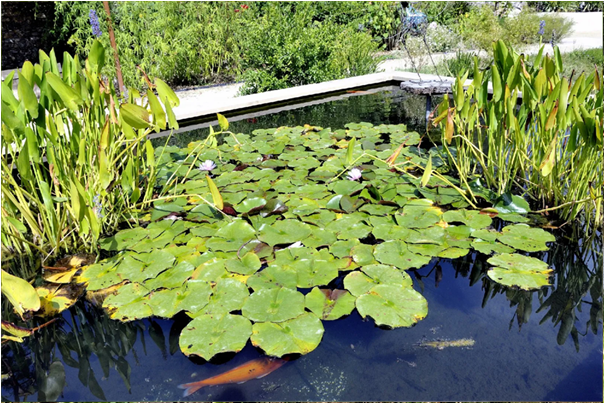The contemporary design of the pond has also brought with it self-cleaning systems, which are both efficient and can also balance ecologically. Nevertheless, unless you understand the design features and operation, you may not be in a position to understand whether a drum filter is the right solution to your problem or which type of drum filter you should be using.
Among such innovations in filters, you can include the so-called Burtons Aquatics drum filters, as they can keep the water crystal-clear with as little input as possible. In the case when you may require professional assistance in installing such advanced systems, That Pond Guy is the expert in such systems in combination with naturalistic ponds, to enable the hobbyist to have his/her pristine-looking water quality without affecting the ecosystem of the pond.
What can a Drum Filter Do?
In general, these drum filters are used for:
- Filtering the water
- To remove suspended solids present in fish ponds.,
How Drum Filters Revolutionize Pond Maintenance
Drum filters automate the most tedious aspect of pond care—solid waste removal.
The following are a few good reasons why they can be a game-changer for your pond system:
- Microscopic filtration – Particles that are smaller than a human hair can be captured by mesh screens that are 60 microns or finer.
- Self-cleaning cycles – Sensors initiate automatic rinsing and allow a very labour-intensive maintenance to be cut by 90%.
- High flow rates – They are appropriate in koi ponds, which can enhance the quick removal of nutrients and healthier fish.
Unlike traditional filters, these systems handle heavy loads without compromising water clarity.
Ecological Benefits of Automated Filtration
While technology drives efficiency, the ecological perks are equally impressive:
- Reduced energy use – Modern designs prioritize low-power operation.
- Preserved beneficial bacteria – Gentle cleaning cycles avoid disrupting biological filtration.
- Less chemical reliance – Superior mechanical filtration minimizes the need for algaecides.
Pairing a drum filter with natural elements like big plants creates a self-sustaining system.
Choosing the Right System for Your Pond
Not all drum filters are equal.
Consider these factors:
- Combi units – Some integrate biological chambers for compact all-in-one solutions.
- Mesh size – 60-80 microns balances clarity with manageable cleaning frequency.
- Redundancy features – Look for bypass systems to safeguard against failures.
That Pond Guy often recommends modular setups for larger ponds, allowing future expansions.
Beyond Koi: Versatile Applications
These systems are not just for hobbyists.
They excel in:
- Aquaculture farms – Handling high bio-loads from dense fish populations.
- Stormwater treatment – Filtering runoff in municipal attenuation ponds.
- Aquaponic systems – Keeping irrigation water particle-free for healthier crops.
The Future of Low-Maintenance Water Features
As drum filter technology evolves, expect smarter integrations like:
- IoT monitoring – Remote alerts for maintenance needs.
- Hybrid bio-mechanical designs – Enhancing natural nitrogen cycles.
- Solar-powered options – For off-grid sustainability.
Until such a time, there are systems available, such as the Burton Aquatics drum filters, which provide the proverbial best of both worlds: innovative efficiency without eroding aquatic systems.
Regardless of whether you are a koi owner or you are planning a large-scale water feature, automation can make a big difference to both performance and ecological balance.

